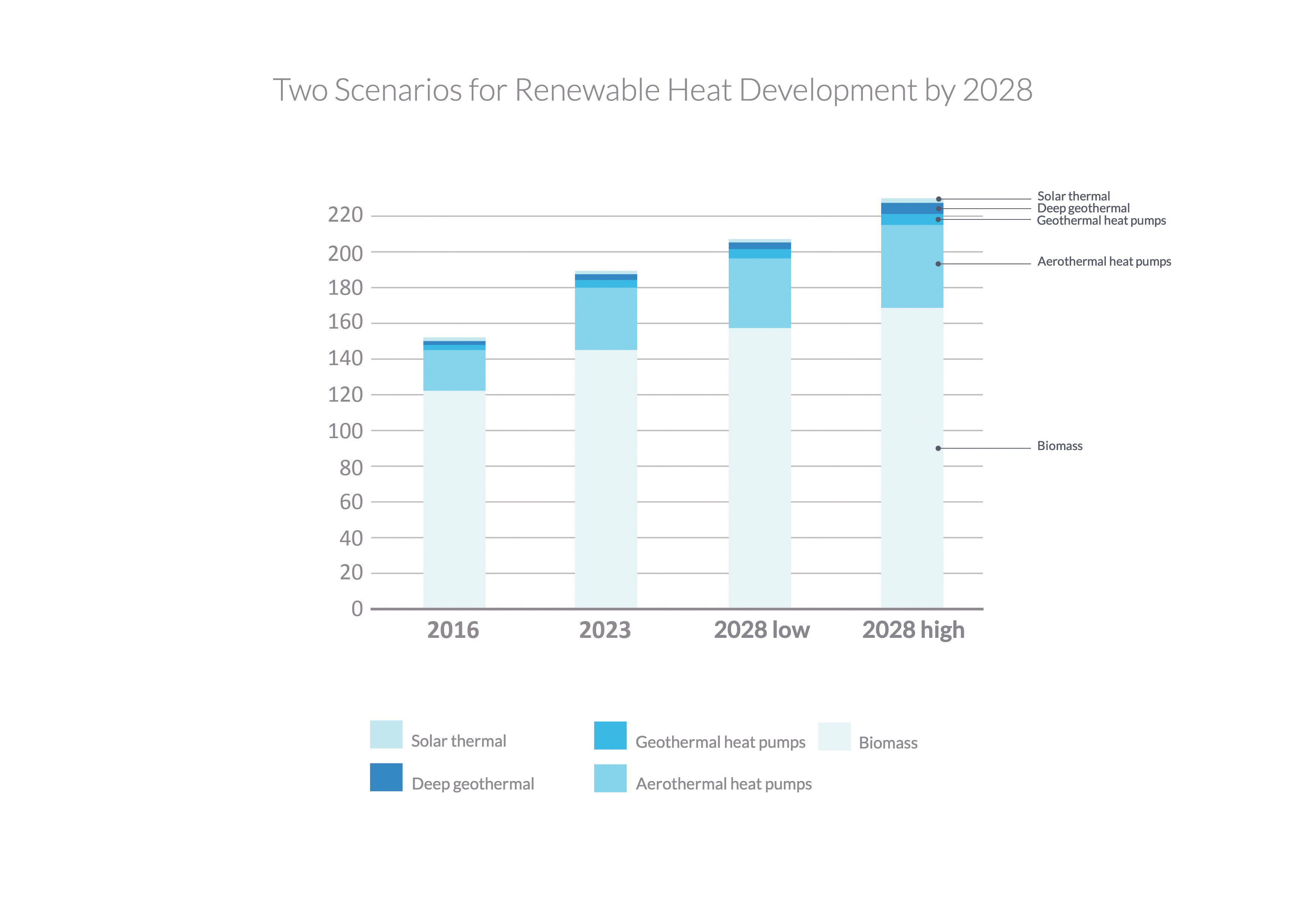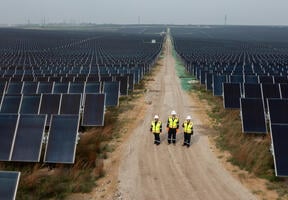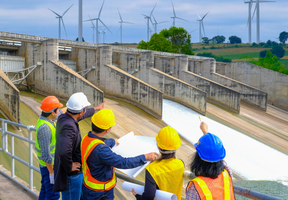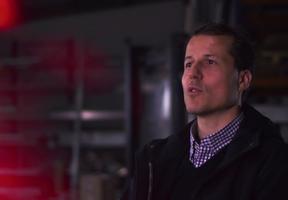France’s Energy Transition Roadmap
Updated on 01.07.2020
10 min read
High School
Economic and social sciences
France’s multi-year energy plan (known by its French acronym PPE) in a roadmap for the periods 2019-2023 and 2024-2028, setting out the country’s main energy priorities and thereby guiding public and private investment. The PPE is in line with the French “National low-carbon strategy”. With these two sets of guidelines, the country aims to meet the targets set by the Paris Climate Agreement and achieve carbon neutrality by 2050. Although the PPE was published by the French government in late 2018, discussions are still ongoing. This article discusses the main focuses of the PPE.

© GettyImages
1) Reducing Energy Consumption
- 2050 target: a 50% reduction in final energy consumption.
- Two intermediate targets: a 7% reduction by 2023 and a 14% reduction by 2028.
- Two key focuses: improving technology for greater and encouraging more “virtuous” consumer habits.
- Two priority sectors: transportation and housing.
- Means: promoting new forms of mobility (car pooling, public transportation) and electric vehicles, and renovating 2.5 million homes by 2028.
- Varying degrees of reduction depending on the : final consumption of energy from petroleum products will drop significantly, as will that from natural gas, although to a lesser extent, whereas final consumption will remain relatively stable (therefore growing proportionally). Use of thermal sources, primarily wood, will increase. consumption will become negligible. See the graph for details (the thickness of each layer indicates consumption levels).
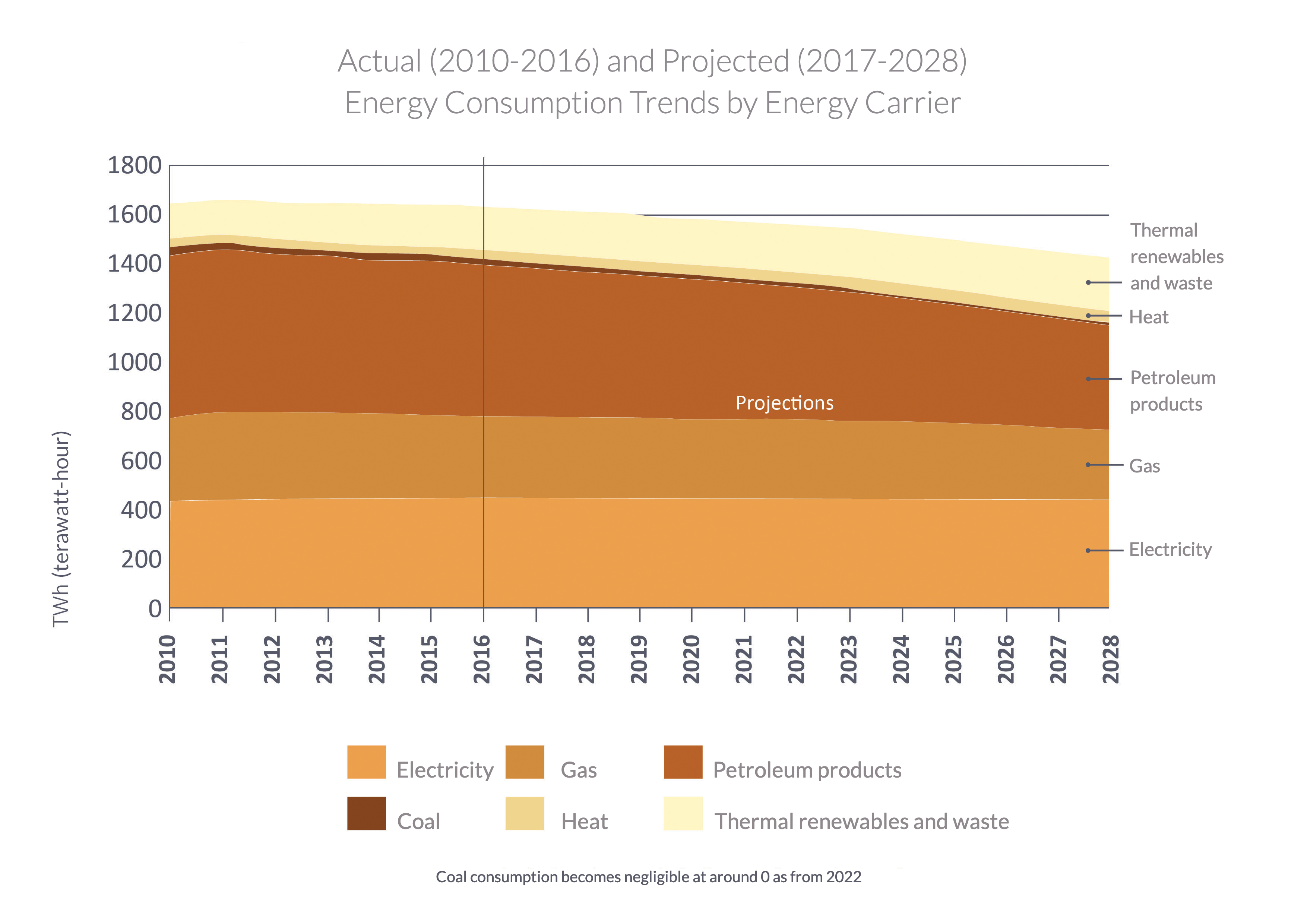
2) Eliminating Fossil Fuels
- According to French President Emmanuel Macron: “In the next 30 years, we will need to go from a country that relies on fossil fuels for 75% of the energy it consumes, to one with 100% carbon-free energy production and consumption by 2050.”
- Two intermediate objectives set out in the PPE: a 20% reduction in fossil fuels (petroleum products, natural gas and coal) by 2023 and a 35% reduction by 2028 (based on 2012 levels).
- Coal: shutdown of France’s last four coal-fired plants by 2022.
- Main sectors: mobility and housing.
- Means: continuing to increase the “carbon tax” (price per metric ton of ), which determines fuel taxes, among other things. However, mechanisms are in planned to limit price increases at the pump if prices soar. Other drivers include developing , introducing rebates to encourage people to switch to electric vehicles, replacing oil-fired boilers and putting 1.2 million electric cars on the road by 2023, served by 100,000 public charging stations. The French National Assembly has voted to ban cars with internal combustion engines by 2040.
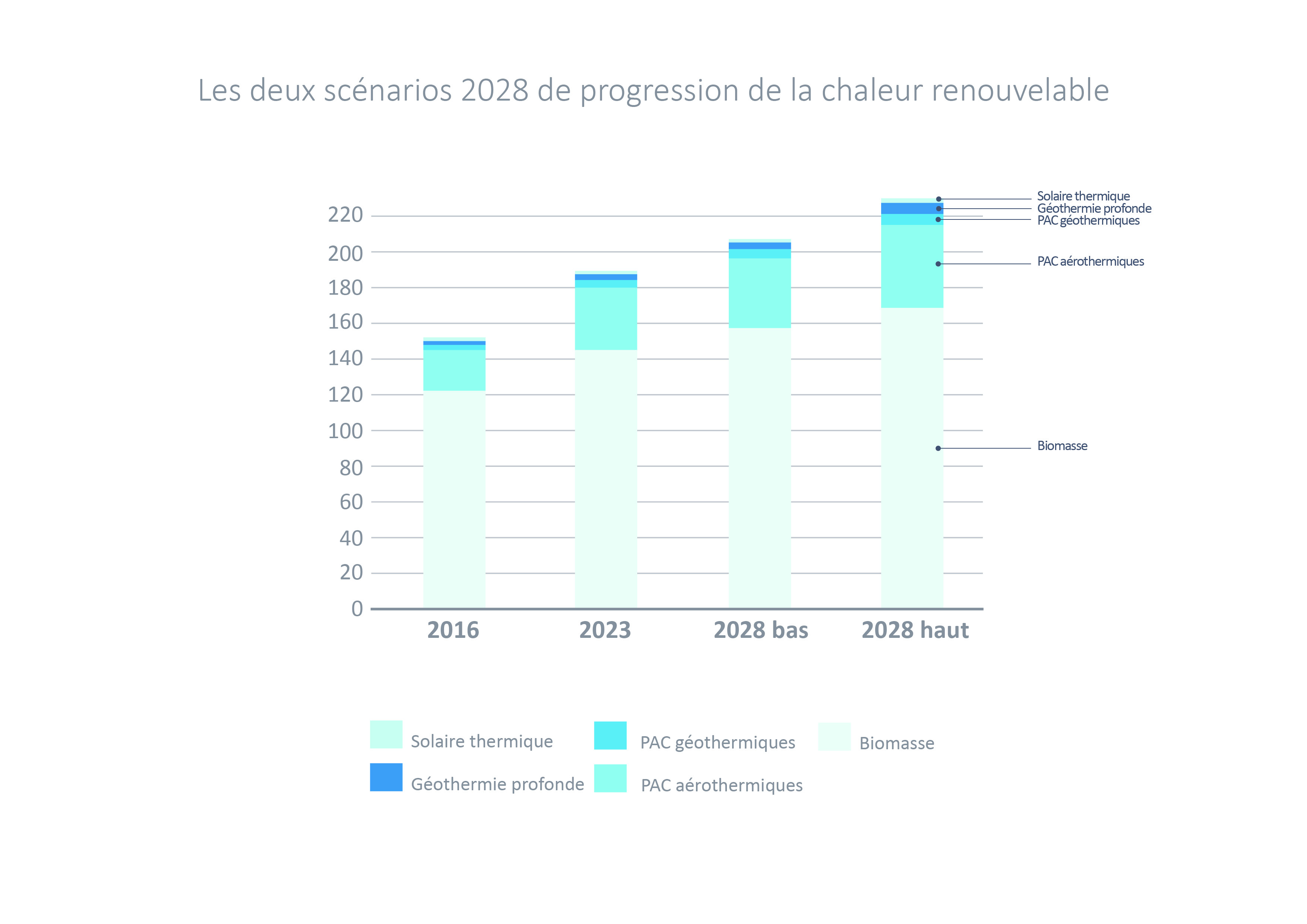
© Planète Energies
3) Developing Renewable Energies
- wind farm output will triple by 2030 (8,000 wind turbines at the end of 2018, and most probably close to 15,000 by 2028).
- Photovoltaic solar power generation will be multiplied by five, thanks especially to land-based and floating solar farms, as well as large-scale rooftop solutions.
- Four new calls for tender will be launched for wind installations between now and 2023.
- The French government has set a profitability standard for renewable energies and will support the “most competitive” solutions.
- For renewable natural gas, or “green gas”, the aim of increasing the proportion to 10% of all natural gas consumed by 2030 has been upheld. However, the government will impose restrictions on production costs, which today are about four times those for conventional natural gas.
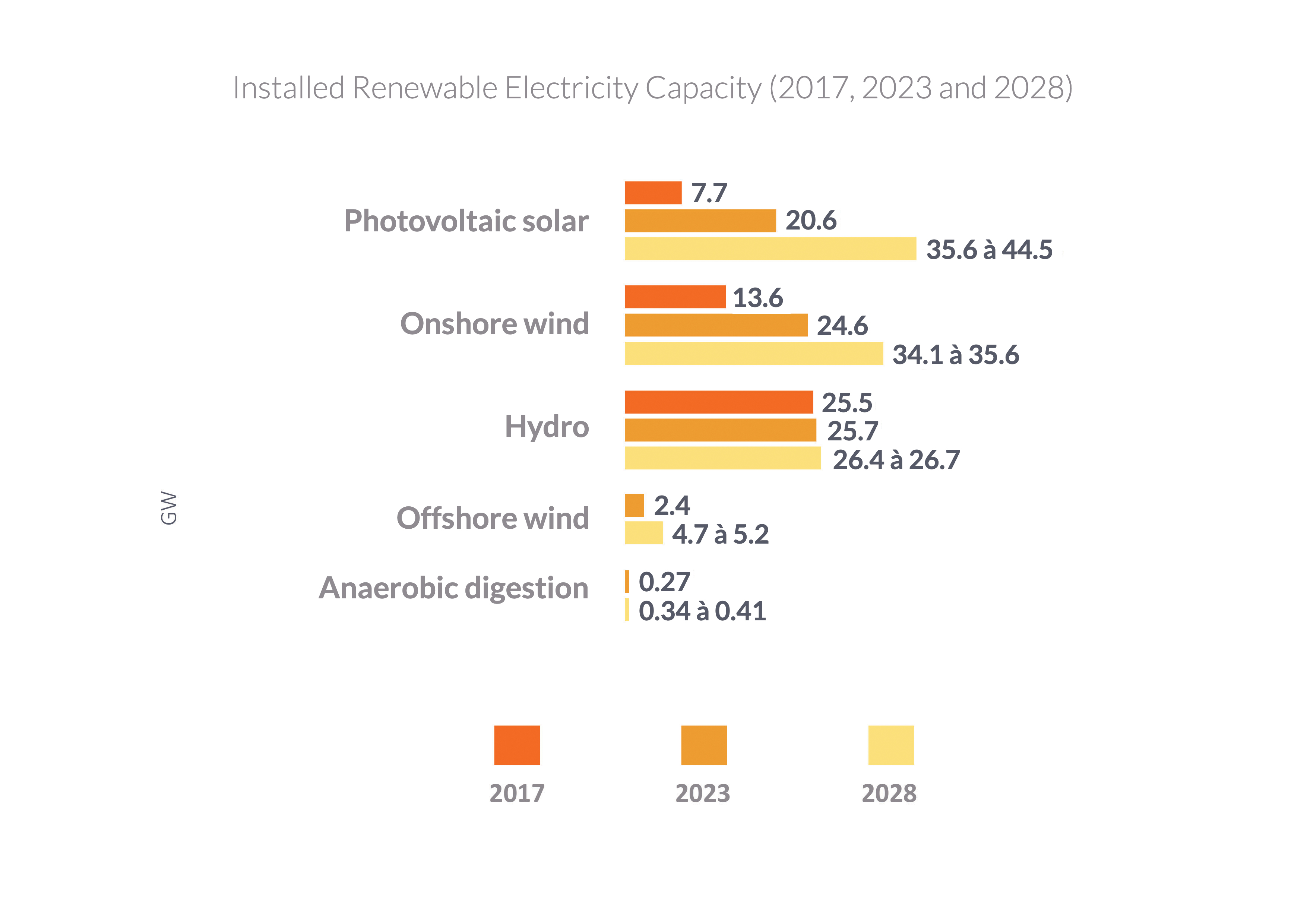
4) Not Giving Up on Nuclear
- The reduction of nuclear to 50% of the power generation mix has been confirmed but pushed back to 2035, instead of 2025 as initially planned.
- “Reducing the use of nuclear power does not mean giving up on it as an energy source,” says Mr. Macron, who describes it as “reliable, carbon-free and affordable.”
- The Fessenheim power plant’s two reactors will be decommissioned in the first half of 2020.
- Two to four of the country’s oldest nuclear facilities will also be shut down before 2030.
- In all, 14 reactors will be decommissioned by 2035.
- After the Flamanville EPR plant comes on stream, a decision will be made by mid-2021 about whether to build more reactors.
- French power utility EDF is being called on to develop a “new nuclear program”.
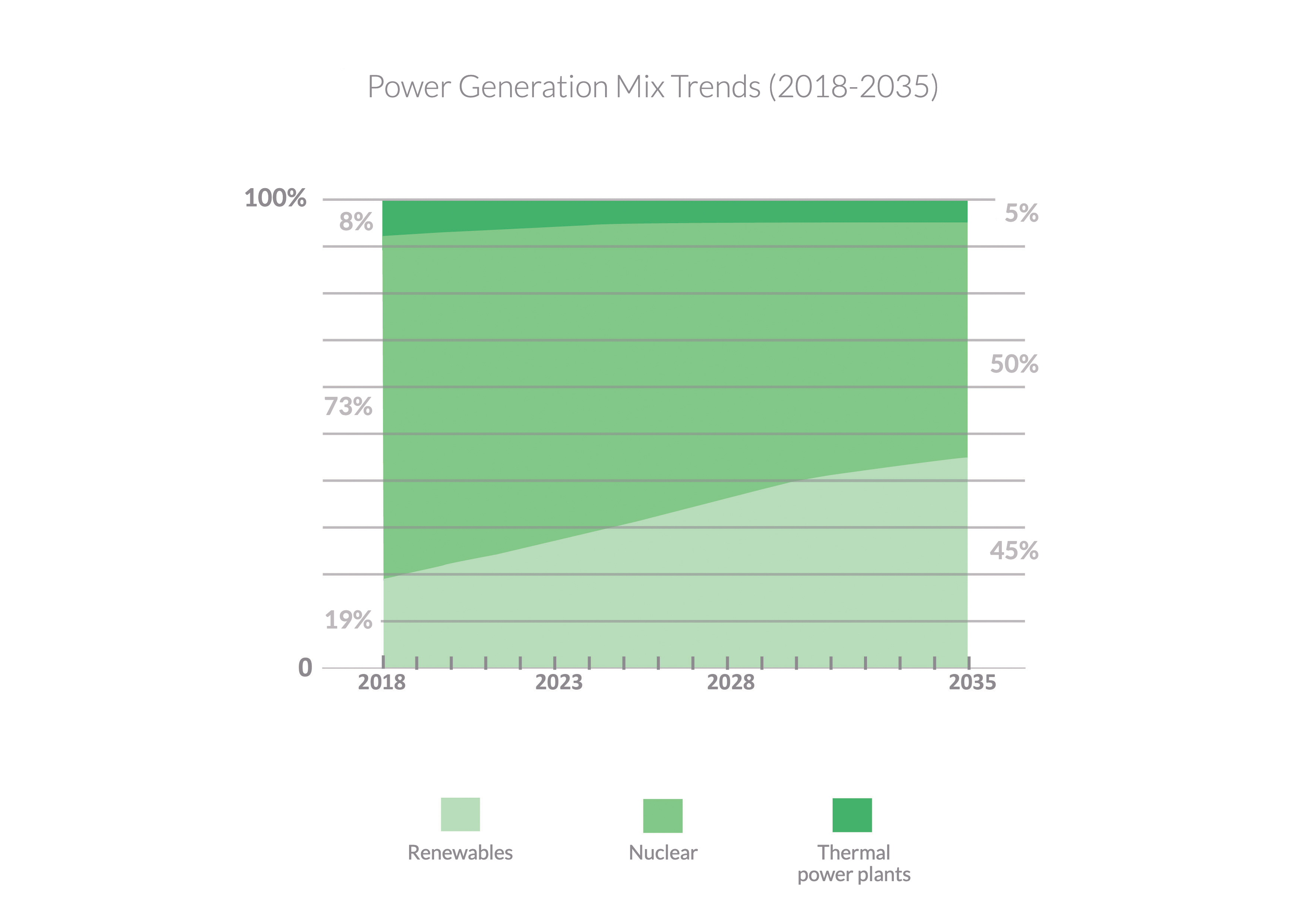
5) Developing Renewable Heat
- Renewable can be produced using (wood and waste), and solar thermal energy, and heat pumps. It can be distributed locally to individual manufacturing facilities or homes, or on a larger scale to eco-industrial parks, districts or whole cities via heating networks.
- The PPE calls for a 40% (low target) to 60% (high target) increase in renewable heat production by 2028 from 2016 levels.
- Means: strengthening the “heat fund”, requiring a minimum amount of renewable heat in all buildings by 2020, doubling aerothermal and geothermal heat pump production and develop heating networks.
